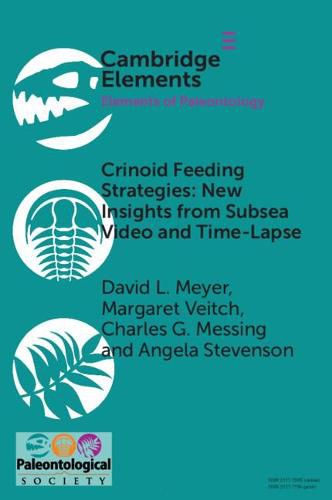Readings Newsletter
Become a Readings Member to make your shopping experience even easier.
Sign in or sign up for free!
You’re not far away from qualifying for FREE standard shipping within Australia
You’ve qualified for FREE standard shipping within Australia
The cart is loading…






Modern videography provides an ever-widening window into subsea echinoderm life with vast potential for new knowledge. Supported by video evidence throughout, this Element begins with time-lapse video made in 1983 on film, using an off-the-shelf camera, flash, and underwater housings. Although quality has now been significantly improved by digital imagery, films from over thirty years ago captured crinoid feeding behavior previously unknown and demonstrated a great potential to learn about many other aspects of their biology. This sequence is followed by several examples of recent digital videography from submersibles of deep-sea crinoids and remotely operated vehicles (ROVs) (stalked and unstalked), as well as close-up video of crinoids in aquaria. These recent studies enabled a new classification of crinoid arm postures, provided detailed views of food particle capture, and revealed a wide range of behaviors in taxa never before seen in life.
$9.00 standard shipping within Australia
FREE standard shipping within Australia for orders over $100.00
Express & International shipping calculated at checkout
Modern videography provides an ever-widening window into subsea echinoderm life with vast potential for new knowledge. Supported by video evidence throughout, this Element begins with time-lapse video made in 1983 on film, using an off-the-shelf camera, flash, and underwater housings. Although quality has now been significantly improved by digital imagery, films from over thirty years ago captured crinoid feeding behavior previously unknown and demonstrated a great potential to learn about many other aspects of their biology. This sequence is followed by several examples of recent digital videography from submersibles of deep-sea crinoids and remotely operated vehicles (ROVs) (stalked and unstalked), as well as close-up video of crinoids in aquaria. These recent studies enabled a new classification of crinoid arm postures, provided detailed views of food particle capture, and revealed a wide range of behaviors in taxa never before seen in life.